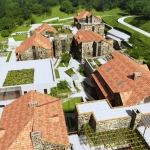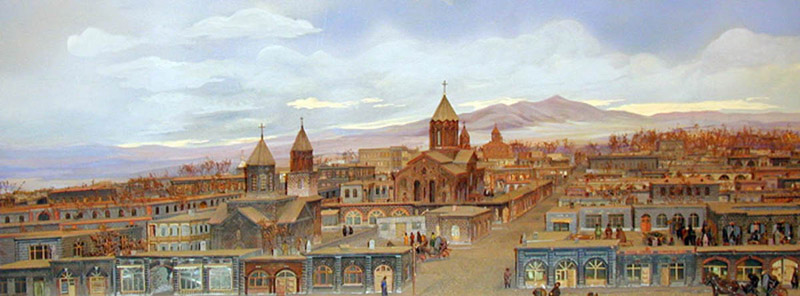This year we are going to celebrate the 100th anniversary of opera “Anush” with great splendor and solemnity. This wonderful work by Armen Tigranyan for the first time was staged a century ago, in 1912 in Gyumri. The author himself was from Gyumri and with his brother, composer Nikoghayos Tigranyan, he has thoroughly developed mighty traditions of local music.
From ancient times Gyumri has been the birthplace of many prominent scientists and artists. The list which is opened with the name of Anania Shirakatsi, famous Armenian mathematician and calendar scholar of the 7th century, has been filled in all times with new and new names. The center of Gyumri is known for Varpetats street (Masters’ street), where the museums of Avetik Isahakyan and Hovhannes Shiraz are situated.
The museum of Mher Mkrtchyan devoted to the life and works of beloved actor has recently been opened on the approaches of this street. Writers Atrpet and Mkrtich Armen, Ghazaros Aghayan and Atabek Khnkoyan, architect Toros Toramanyan, composer Romanos Melikyan also lived and worked in this city at the beginning of the 20th century. Not to mention the painters and sculptors, such as Sergey Merkurov, Mariam and Yeranuhi Aslamazyans, Khachatur Yesayan, Rafael Atoyan, Hrachya Rukhkyan, Eduard Artsrunyan and many others who also lived in Gyumri.
Eventually, which is the main secret of Gyumri for being the capital of arts and handicrafts? The city is likely to be in the proper artistic environment. Such an environment educates the human soul and endows people with aesthetic view. Today, even after the ruinous earthquake of 1988, the 1600 buildings of “Kumayri” historical and architectural reserve make the essential part of the city. These are one or two-storied vaulted structures decorated with sculptures which outline the streets that respire the unique coloring. It is not accidental that the great part of ancient and new Armenian films was also made in Gyumri (“Triangle”, “A Piece of Sky”, “Song of the Old Days”, etc.).
It is noteworthy that the art influenced not only museums and public buildings but also the usual dwelling houses. With all their differences they reflect a peculiar local style. The latter includes the elements of both Russian city building and European classicism, both modernism of 20th century and Soviet constructivism. The artisans of Gyumri localized them to create a delightful synthesis. The best thing to do is to walk along the streets of Gyumri and admire the beauty of nice buildings. At that moment your heart will beat more harmonically and your soul will be filled with pride. One rejoices seeing that the newly erected buildings continue the long standing architectural traditions. This comes to provide the connection between old and new, as well as the spiritual roll-call between the past and coming generations.
The article created by Levon Lachikyan











